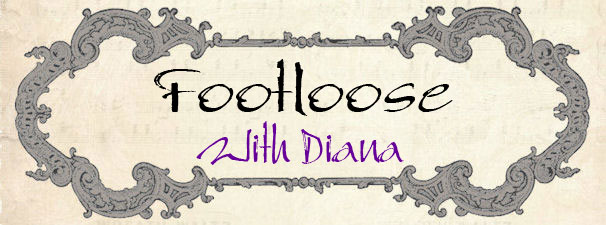In October 2014, I flew off to a place I've always wanted to see, Madagascar. It takes some doing to get there and a fair bit of money, but I thought the chance to see lemurs in their own habitat would be worth it. I'm not so sure that it was, but I'll get to the many reasons why later.
As always on this blog, you can click any photo to enlarge it. At the bottom of the page, click "Older Posts" to continue on with the trip in order.
I flew from Los Angeles to New York to Johannesburg, South Africa, and on to Antananarivo, the capital city, familiarly known as Tana. I would have a lot of experience flying into and out of Tana because the road infrastructure there is appalling. Many of the roads are unpaved and unmaintained, and a lot of those that are paved were built by the French after World War II and not maintained much at all since. Consequently, you fly to whatever place you want to see, and then fly back to Tana afterwards so you can fly out to the next destination - rinse and repeat.
Tana is a sprawling city of over 2 million people and not a single traffic signal - I was told they'd put a few in years ago, but decided the experiment was not a success, so they ditched them. You may imagine the chaos that results...roads are shared by pushcarts, Zebu-pulled carts, cars, vans serving as buses, people walking, bicycles, etc.
Anyway, it's got a number of charming old colonial buildings:
A panorama of the city near sundown - the palace is on the hill in the upper right corner of the photograph:
Taxis in Tana are virtually all ancient Citroen 2CV (deux chevaux), a vehicle discontinued in 1990 (although I question whether any of Tana's are that recent):
As always on this blog, you can click any photo to enlarge it. At the bottom of the page, click "Older Posts" to continue on with the trip in order.
I flew from Los Angeles to New York to Johannesburg, South Africa, and on to Antananarivo, the capital city, familiarly known as Tana. I would have a lot of experience flying into and out of Tana because the road infrastructure there is appalling. Many of the roads are unpaved and unmaintained, and a lot of those that are paved were built by the French after World War II and not maintained much at all since. Consequently, you fly to whatever place you want to see, and then fly back to Tana afterwards so you can fly out to the next destination - rinse and repeat.
Tana is a sprawling city of over 2 million people and not a single traffic signal - I was told they'd put a few in years ago, but decided the experiment was not a success, so they ditched them. You may imagine the chaos that results...roads are shared by pushcarts, Zebu-pulled carts, cars, vans serving as buses, people walking, bicycles, etc.
Anyway, it's got a number of charming old colonial buildings:
A commenter to this post says that the red house below is not a colonial building, but instead the house of Prince Ratsimamanga before his execution by the French:
This is the palace, gutted by fire in 1995, of Queen Ranavalona I, an isolationist ruler whose reliance on forced labor and a large standing army reduced the island's population by half in the 33 years of her reign. Not very popular, to say the least.
A panorama of the city near sundown - the palace is on the hill in the upper right corner of the photograph:
Taxis in Tana are virtually all ancient Citroen 2CV (deux chevaux), a vehicle discontinued in 1990 (although I question whether any of Tana's are that recent):









































.jpg)















